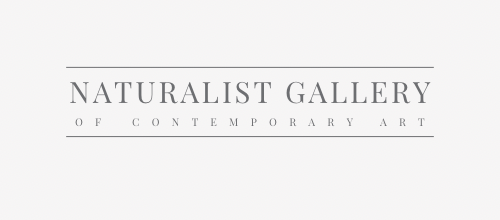Featured image: 55 meter Buddha in 1963 and in 2008 after destruction
Iconoclasm, from the Greek words “eikon” (image) and “klasis” (to break), refers to the destruction or rejection of religious images or icons. This phenomenon, driven by various religious, political, or cultural motivations, has appeared throughout history, leaving a significant impact on art and society. Iconoclasm can be seen across many cultures and religions, including Christianity, Islam, and Judaism, often leading to profound shifts in artistic expression and cultural heritage.
Explore our curated selection of contemporary artists from around the globe.
Naturalist Gallery offers artist representation internationally. Apply your art.
Historical Context
Byzantine Iconoclasm

Solidus of Leo III
The most notable period of iconoclasm occurred in the Byzantine Empire during the 8th and 9th centuries. This movement began under Emperor Leo III, who, interpreting natural disasters as signs of divine displeasure with idol worship, initiated the removal and destruction of religious images. This period of iconoclasm can be divided into two significant phases:
-

Icon painting of Jesus Christ as Pantocrator
First Iconoclastic Period (726-787): Emperor Leo III's decree against icons led to their widespread destruction. The theological basis for this iconoclasm was rooted in Old Testament commandments against idolatry. The Seventh Ecumenical Council in 787 ended this phase by affirming the veneration of icons while condemning their worship as idolatry. -

Icon of the Triumph of Orthodoxy
Second Iconoclastic Period (814-843): Initiated by Emperor Leo V, this period saw a resurgence in the destruction of icons. It ended in 843 when Empress Theodora restored the use of icons, a decision still celebrated in the Orthodox Church as the Feast of Orthodoxy.
Other Historical Instances

Storming of the Bastille (1789) Jean-Pierre Houël
Iconoclasm has also appeared in other historical contexts. During the Protestant Reformation in the 16th century, reformers rejected Catholic religious imagery, leading to the destruction of many religious artworks. Similarly, the French Revolution saw the targeted destruction of religious and royalist images as symbols of the old regime. In the 20th century, radical groups like the Taliban have engaged in iconoclasm, notably destroying the Buddhas of Bamiyan in 2001).
Impact on Art and Society
Byzantine Art
Argument about icons before the emperor, in the Skylitzis Chronicle
During the Byzantine Iconoclasm, the production of religious art ceased, and existing icons were destroyed or replaced with non-figurative decorations such as crosses. This period resulted in a significant loss of religious artworks and a shift in artistic styles. Post-iconoclastic Byzantine art saw the development of more standardized church decorations and the introduction of new iconographic themes, such as the biographical icons and the use of miniature mosaics.
Protestant Reformation

Altar piece in St. Martin's Cathedral, Utrecht, attacked by Calvinists in the Beeldenstorm in 1566
The Protestant Reformation's iconoclasm led to a reevaluation of religious imagery in art. Protestant regions saw a shift towards more secular themes in art, such as landscapes and still lifes, as religious images were rejected. This period also emphasized the use of symbols to convey religious messages without depicting sacred figures directly.
Contemporary Iconoclasm

The Robert E. Lee monument in New Orleans, Louisiana being removed on May 19, 2017
In contemporary times, iconoclasm continues to affect art and society. The destruction of statues during revolutionary movements, such as the toppling of Confederate statues in the United States, reflects ongoing conflicts over cultural heritage and historical memory. These acts of iconoclasm are often motivated by political and social ideologies, aiming to challenge existing power structures and promote social change.
Learn more About Naturalist Gallery of Contemporary Art.
You may also find the following articles helpful:
The 14 Essential Artists of Impressionism
Expressionism: 20 Iconic Paintings & Their Artists
Renaissance Art: Origins, Influences, and Key Figures
Classical Art Movement: Exploring the History, Artists, and Artworks
Figurative Art: Understanding, Collecting, and Appreciating the Style
Daily Routines of Famous Artists: Learn from the Masters
Top 12 Controversial Artworks That Changed Art History

